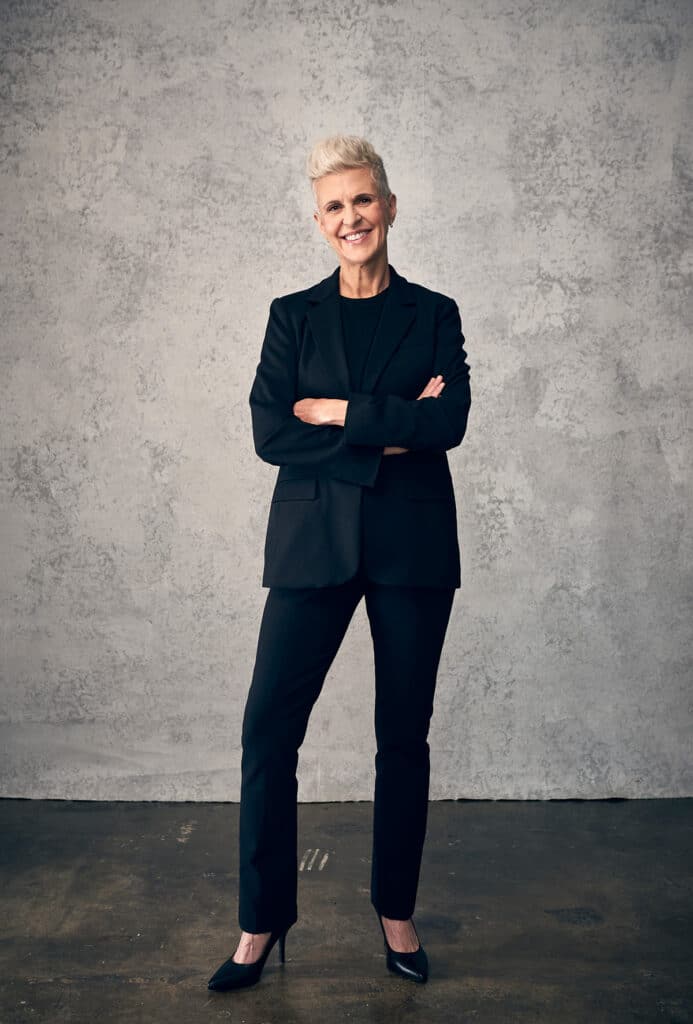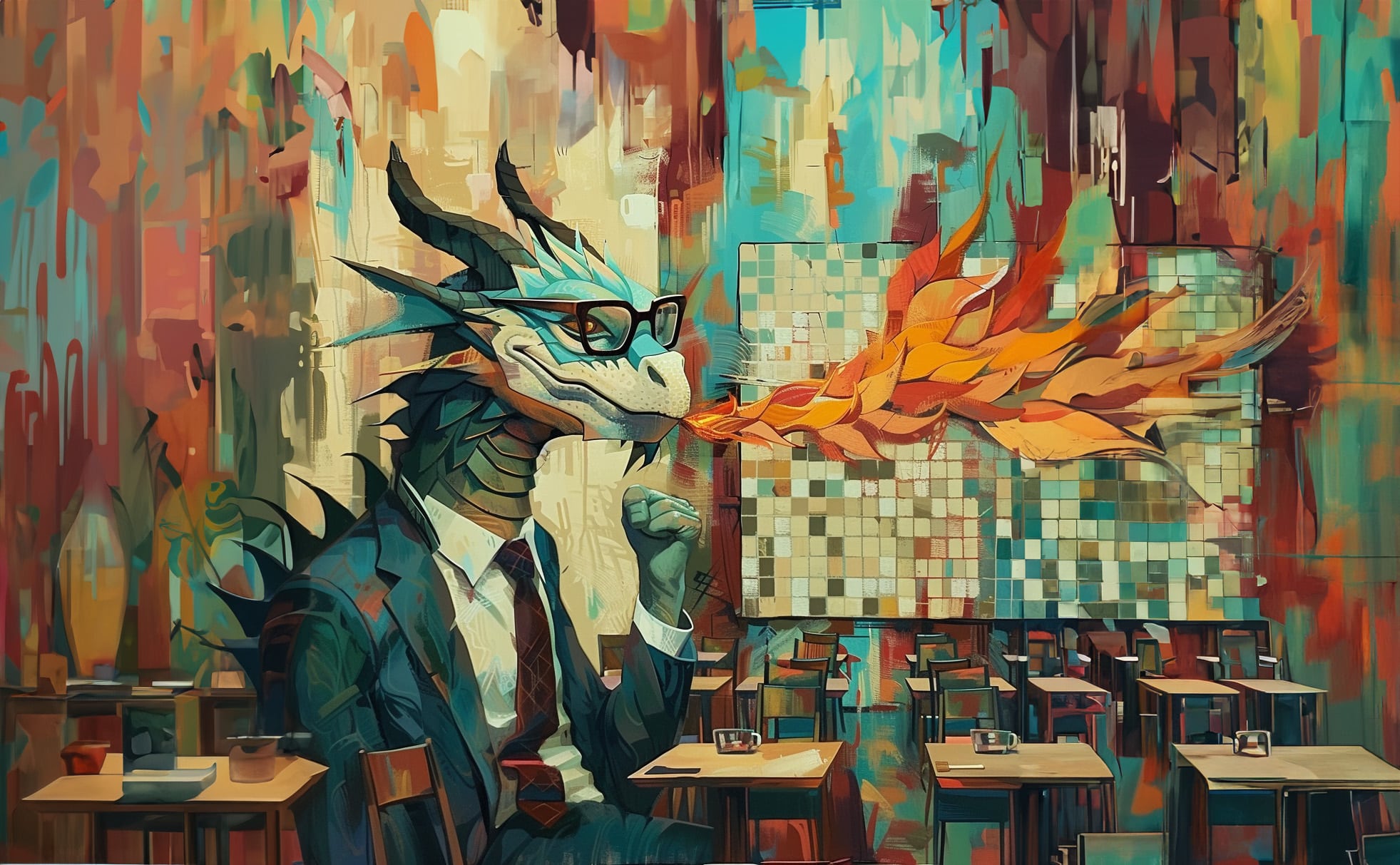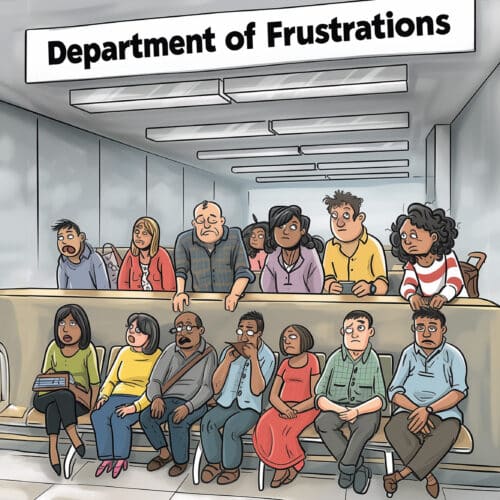“Change is hard because people overestimate the value of what they have — and underestimate the value of what they may gain by giving that up.”
– James Belasco and Ralph Stayer, organizational change experts
Change, especially in organizations, is like riding a dragon — not just any dragon, but your personal pet dragon. This metaphorical creature represents our natural resistance to change. But why do we resist, and how can we tame this pet dragon to ease transitions?
The Problem with Change
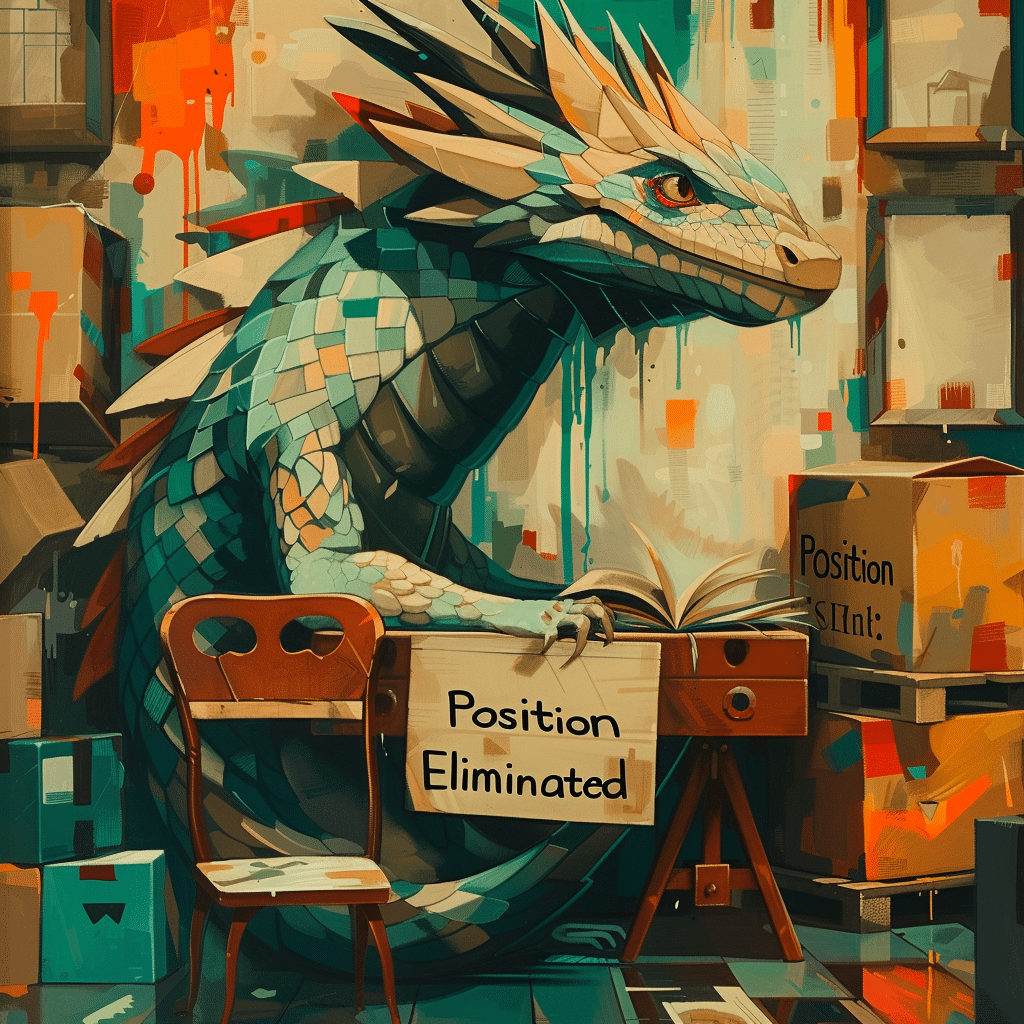 Organizations face significant challenges in implementing change. Even with well-crafted “change management” plans, human psychological resistance from the people you need to “get on board” is a common hurdle. This resistance stems from a deep-rooted aspect of human psychology.
Organizations face significant challenges in implementing change. Even with well-crafted “change management” plans, human psychological resistance from the people you need to “get on board” is a common hurdle. This resistance stems from a deep-rooted aspect of human psychology.
William Bridges, in Transitions, outlines the three psychological phases we experience during change: Loss, Chaos & Innovation (Neutral Zone), and New Beginnings. These 3 stages are:
- Loss: Initially, change always brings losses, whether the change is voluntary or viewed as “positive” (e.g. a promotion) vs. “negative” (a job loss).
- Chaos & Innovation Zone (Neutral Zone): A period of uncertainty and confusion, yet also ripe with creative potential.
- New Beginnings: This phase marks acceptance, adaptation, and the discovery of new opportunities.
Transform your resistance into resilience.
PointerWise can help you lead your team through change with confidence.
Our Reptilian Brain: The Overprotective Pet Dragon
Our reptilian brain acts as an overprotective guardian, sometimes reacting excessively to change. It remembers past difficulties (like a challenging ERP upgrade or a new acquisition) and cautions us with a dreaded, “This is going to be AWFUL!” This impacts our interactions and our approach to change.
Rather than viewing this response as a burden, consider it as a pet dragon. Name it playfully, recognizing its intent to protect, albeit overly so. Mine is “Daisy.” More on that later. It’s vital to understand that your dragon doesn’t grasp the “no pain, no gain” concept.
Bridges’ research identified 7 types of loss that your dragon will smell before you get out of bed. First, you need to understand how bad the smell of loss is to your dragon, even if your rational brain knows the loss won’t kill you. Trying to suppress Daisy’s hypervigilance when she smells a poisonous dragon-eating Godzilla around the corner, is like trying to tell your leash-aggressive dog that the little poodle across the street is harmless. It doesn’t work.
Get into your dragon’s head, and you’ll unlock the resistance you and those you lead feel when change looms large.
Three Dragon-Taming Tips for the Loss and Chaos Zones of Change
Tip One: Catalogue the Losses
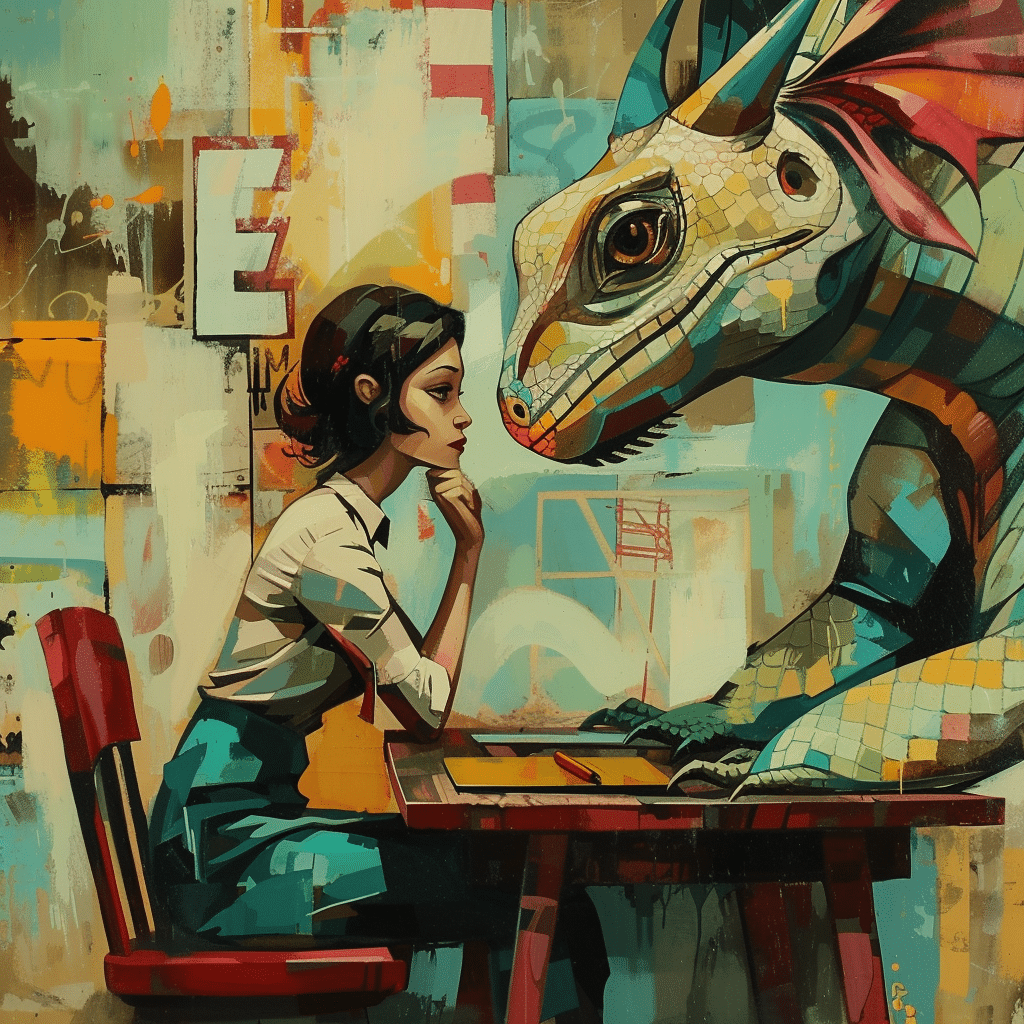
First, list each loss that you and your team have suffered and will suffer as a result of the change. Be brutal and don’t leave anything out. We tend to dismiss the loss part of change repeatedly, at home and at work, when we are passionate that change is needed and that the end result will be great. We forget to slow down and help ourselves and those we lead process how it won’t be the same and that we will miss some parts of that. The 7 types of loss are:
- Loss of Control: Change can make us feel that we’re no longer in charge of our environment or destiny. This loss of control can be unsettling.
- Loss of Comfort: We often lose our comfort zones during change, being pushed into unfamiliar territories or routines.
- Loss of Security: Changes, especially in the workplace, can threaten our sense of job security, leading to anxiety about the future.
- Loss of Relationships: Changes might mean losing connections with colleagues or friends, especially if the change involves relocation or restructuring.
- Loss of Identity: In organizational changes, roles can shift, leading to a loss of identity or a sense of self that was tied to the previous role.
- Loss of Purpose: When changes occur, the purpose or goals we had might become unclear or feel less relevant, leading to a sense of loss.
- Loss of Competence: Learning new skills or adapting to new environments can make us feel less competent, at least temporarily.
Tip Two: Apply the 4 R’s
While adapting Bridges’ model to our pet dragon visualization, for each of the 7 types of loss, reach up to the shelf where you keep your magic dragon calming potions and select a one of these “4 R’s”:
- Restore: This is essentially going back to the way it was. So maybe the loss is not worth it, and you reverse course. Or you might identify elements from the past that you thought might be lost but can be retained and brought into the new situation.
- Replace: Identify the loss and find a way to substitute it with something new or different.
- Redesign: Look at the loss as an opportunity to innovate or improve upon what was there before.
- Relinquish: Accept the loss that cannot be restored or replaced and let go to move forward.
Tip Three: Repetitious Care, Concern, Visualization, and Clarity of Goals
 Together, the 2 C’s of Care and Concern emphasize the importance of treating those undergoing change not just as cogs in a machine but as human beings with valid emotions and reactions. In the context of organizational change, these elements remind us that successful transitions are first and foremost about achieving business outcomes and that how these changes are experienced and processed by individuals makes all the difference. It’s about leading with empathy and understanding, not because it’s “nice,” but because it gets us where we want to go faster, with less drag and frustration, and less potential for losing out best people to despair and burnout in the process. The 2 C’s are where we start once we move from processing Loss and into the Chaos and Innovation stage of transitions, during which nothing seems to work right, and your pet dragon is breathing a fiery “I TOLD YOU SO!” So what do we mean by “Care and Concern?”:
Together, the 2 C’s of Care and Concern emphasize the importance of treating those undergoing change not just as cogs in a machine but as human beings with valid emotions and reactions. In the context of organizational change, these elements remind us that successful transitions are first and foremost about achieving business outcomes and that how these changes are experienced and processed by individuals makes all the difference. It’s about leading with empathy and understanding, not because it’s “nice,” but because it gets us where we want to go faster, with less drag and frustration, and less potential for losing out best people to despair and burnout in the process. The 2 C’s are where we start once we move from processing Loss and into the Chaos and Innovation stage of transitions, during which nothing seems to work right, and your pet dragon is breathing a fiery “I TOLD YOU SO!” So what do we mean by “Care and Concern?”:
- Care: This represents the empathy and support extended to individuals undergoing change. Care is about acknowledging the human side of transitions. It involves recognizing that change can be disorienting, stressful, and even frightening for many people. Demonstrating care means providing a supportive environment where individuals’ feelings and concerns are heard and addressed. It can involve offering resources for coping, such as counseling, training, or mentorship programs. Care also encompasses the idea of being patient with people as they adjust to new ways of working or thinking. It’s about creating a culture where people feel valued and supported during times of uncertainty. It means listening to all that complaining. Over and over and over. And not breathing fire. Your dragon has that covered. Douse that inner fire with a nice drink of ice water, go for a walk, meditate, or scream in the shower.
- Concern: This aspect goes a step beyond care; it’s about actively engaging with individuals to understand their specific worries and apprehensions about the change. Concern involves a proactive approach to identify and mitigate issues that might arise during the transition. This means not just waiting for problems to surface but seeking out feedback, asking questions, and keeping communication channels open. By showing concern, leaders and change managers can tailor their strategies to address their team members’ unique needs and fears, fostering a more inclusive and considerate approach to change management. Does this sound like too much time? Your dragon says, “THAT WILL BE AWFUL?” How much time are you spending coping with resistance to change? I rest my dragon-loving case.
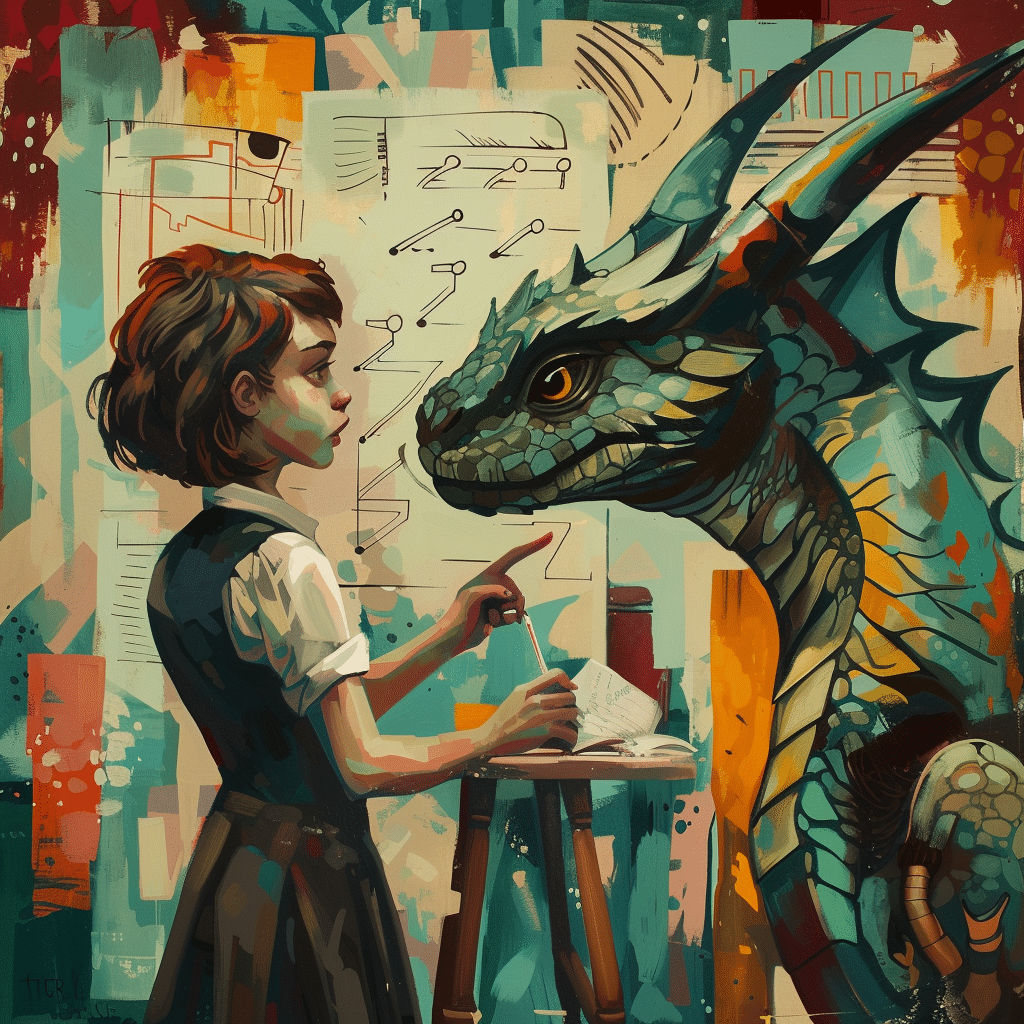 After the 2 C’s come the 4 P’s in quick succession. It’s a one-two punch that will have your dragon asking to play instead of fight. William Bridges’ concept of the 4 “Ps” — Purpose, Picture, Plan, and Part — is a cornerstone in managing and facilitating the human psychology of change at an individual and organizational level. Each “P” represents a crucial element in guiding people through the transition process, helping them embrace change rather than resist it.
After the 2 C’s come the 4 P’s in quick succession. It’s a one-two punch that will have your dragon asking to play instead of fight. William Bridges’ concept of the 4 “Ps” — Purpose, Picture, Plan, and Part — is a cornerstone in managing and facilitating the human psychology of change at an individual and organizational level. Each “P” represents a crucial element in guiding people through the transition process, helping them embrace change rather than resist it.
Below is a summary of each of the 4 Ps. Daisy likes hers with a bowl of spaghetti, her favorite food. Yes, I picture my dragon in 4D. Because it makes her funny. Humor is at the root of how people overcome their fears:
- Purpose: This involves understanding and communicating the ‘why’ behind the change. Purpose provides the fundamental reason for the transition. It’s important to articulate this purpose clearly so that everyone involved can grasp the necessity of the change. When people understand the underlying reasons for a shift, whether it’s for growth, efficiency, or survival, they’re more likely to commit to the process.
- Picture: This refers to creating a clear vision or image of what the future looks like after the change is implemented. It’s about painting a vivid picture of the desired outcome. This visualization helps in making the abstract concept of change more concrete and tangible. When people can visualize the result, it becomes easier for them to work towards it, as they have a clear goal in sight.
- Plan: A plan outlines the steps required to achieve the change. It provides a roadmap, detailing how to move from the current state to the desired future state. A well-structured plan includes timelines, milestones, resource allocation, and responsibilities. This step is crucial as it transforms vision into actionable steps, reducing uncertainty and confusion during the transition.
- Part: This is about defining the role of each individual in the change process. It answers the question, “What is my part in this change?” By clarifying roles and expectations, individuals feel more involved and responsible for the success of the change. It gives a sense of ownership and accountability, making the transition more personal and less imposed.
“Change is inevitable — except from a vending machine.” – Ellen DeGeneres
Lead change effectively and foster a culture of growth and innovation.
Contact us today to learn how!

